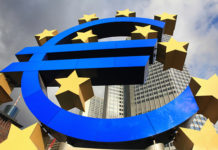Markets
(Much) higher than expected May UK inflation temporarily sent trembles through global bond markets yesterday morning, but in the end spill-overs outside the UK remained limited. With headline inflation holding at 8.7% Y/Y (0.7% M/M) and core inflation accelerating from 6.8% to 7.1%, pressure on the Bank of England is mounting the reaccelerate the pace of rate hikes starting at today’s meeting. The 2-y initially jumped more than 15 bps (new top near 5.1175%), but yields closed off the intraday highs (2-y +9.3 bps; 30-y +5.9 bps). Even so, uncertainty on today’s BoE action prevented sterling to profit from higher yields. Investors scaled back sterling longs. EUR/GBP jumped from the 0.8530 area after the release to even close just north of the 0.86 big figure. Fed’s Powell in its testimony before the House held close to last week’s post FOMC assessment. Explaining last week’s ‘pauze’, the Fed chair indicated that at current point in the hiking process, it makes sense to move rates higher but at more moderate pace. However, the Fed still has quite a way to go inflation. In this respect, he sees two additional rate hikes as guided in the new dots as a good guess. Powell’s ‘hawkish’ rhetoric only had a limited impact on US interest rates. The US curve also turned further inverse (2-y +3 bps; 30-y -0.4 bps). On this side of the Atlantic, German yields added between 3.7 bps (5-y) and 2.6 bps (2-y), the very long end outperforming (-0.6 bps). Powell’s anti-inflationary commitment at least didn’t help the dollar. DXY dropped from the 102.7 area pre Powell to close near 102.10. The euro again outperformed. EUR/USD even clear the June top to close at 1.097. The yen again underperformed. USD/JPY finished near 141.88. EUR/JPY even closed at a new multi-year top (155.89). Equities on both side of the Atlantic fell prey to further profit taking (EuroStoxx 50 -0.47%, S&P -0.52%, Nasdaq -1.21%).
Today, multiple central banks including the Norges Bank (NB), the Swiss National Bank (SNB), the national bank of Turkey and of course the Bank of England will decide on monetary policy. The SNB and the Norges Bank are expected to raise rates by 25 bps, but for the NB it might be a close call (25 bps step or 50 bps). For the CBRT, markets look out for a U-turn in policy after the post-election change at the helm of the CBRT (hike expected from 8.5% to 20.0%). Markets evidently will be keen the see the BoE reaction after several months of higher than expected inflation. Money markets are uncertain whether this will immediately translate into a 50 bps step. Whatever the decision, the BoE will have to strengthen its guidance/anti-inflationary commitment. The potential negative impact of tighter policy on growth and on other UK assets yesterday was a negative for sterling. Even in case of more decisive BoE action, we stay cautious on sterling.
News and views
The Bank of Canada at the June meeting deliberated a hike or hold and flag an increase for July meeting. It opted for the former (to 4.75%) after holding rates constant since January. “Members were of the view that with the resurgence in household spending growth, the pickup in consumer confidence, and the slowing in disinflationary momentum, monetary policy did not look to be sufficiently restrictive,” the minutes read. It sticks to a data-dependent approach. Since the June gathering, Canada unexpectedly lost jobs in a possible sign of a softening labour market, but April retail sales were much stronger than expected. In this respect, the “Governing Council agreed that the economy remained clearly in excess demand and that the rebalancing of supply and demand was likely to take longer than previously expected”. The Canadian dollar appreciated against the dollar yesterday with an intraday 2% oil rise supporting the move. It was nevertheless mainly a USD move though, following fainting US yields during Fed chair Powell’s testimony. USD/CAD dipped to 1.3164, the lowest level since September 2022.
The Brazilian central bank kept the Selic rate steady at 13.75% yesterday for a seventh meeting straight. It dropped language pledging rate hikes could resume if inflation doesn’t follow the projected path but stuck to the idea that rates should be high for a long enough period to ensure inflation, 3.94% in May, reverses back to target (3.25% this year and 3% in 2024 and 2025). Interestingly, the statement steers clear from hinting at rate cuts, ignoring increasingly louder calls from president Lula and his government. The central bank lowered its inflation forecast for this year to 5% from 5.8% and cut the one for next year to 3.4% from 3.6%. Brazil’s real finished near intraday highs vs the USD yesterday. The close at 4.764 was the weakest since June last year.














